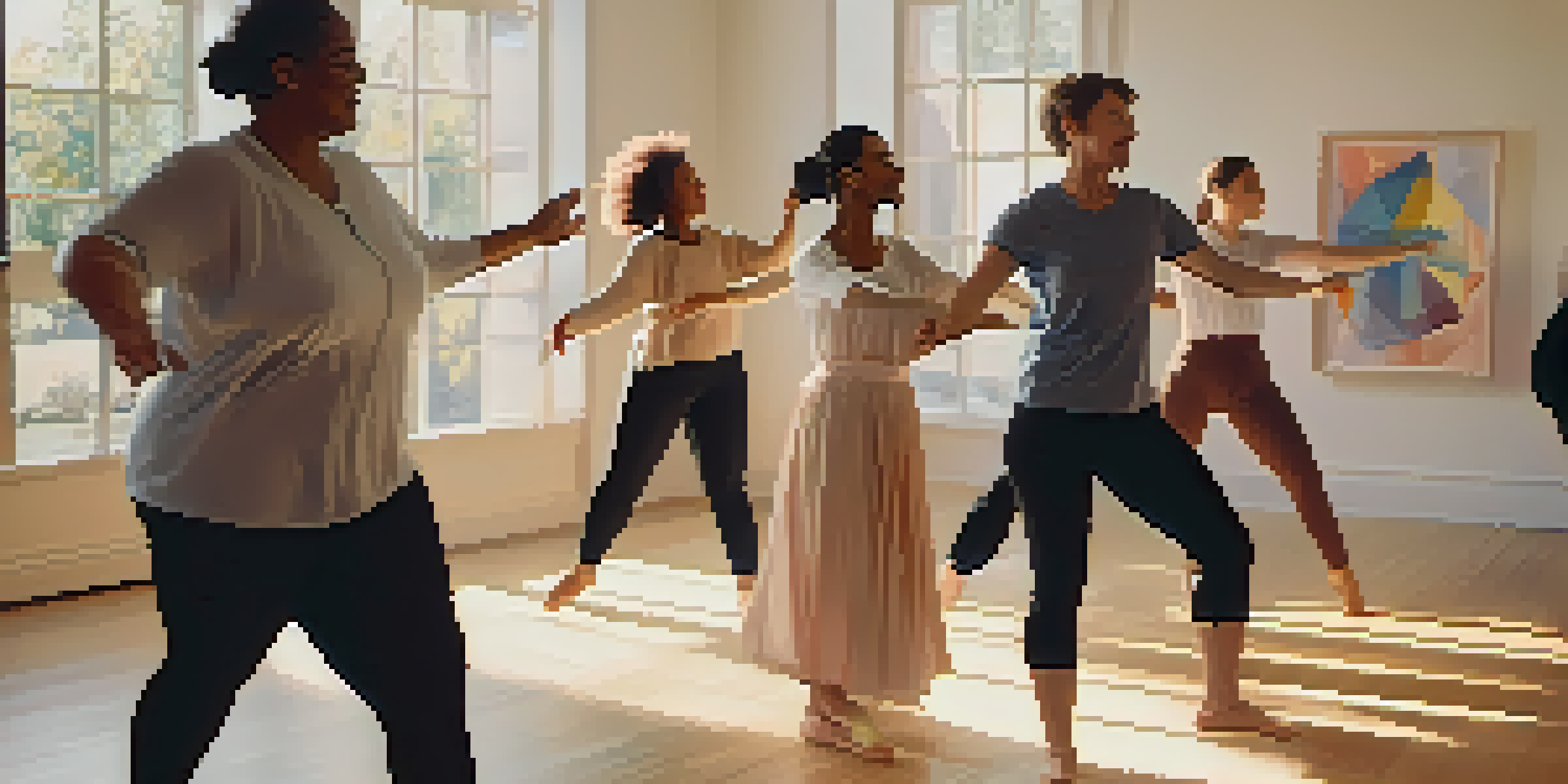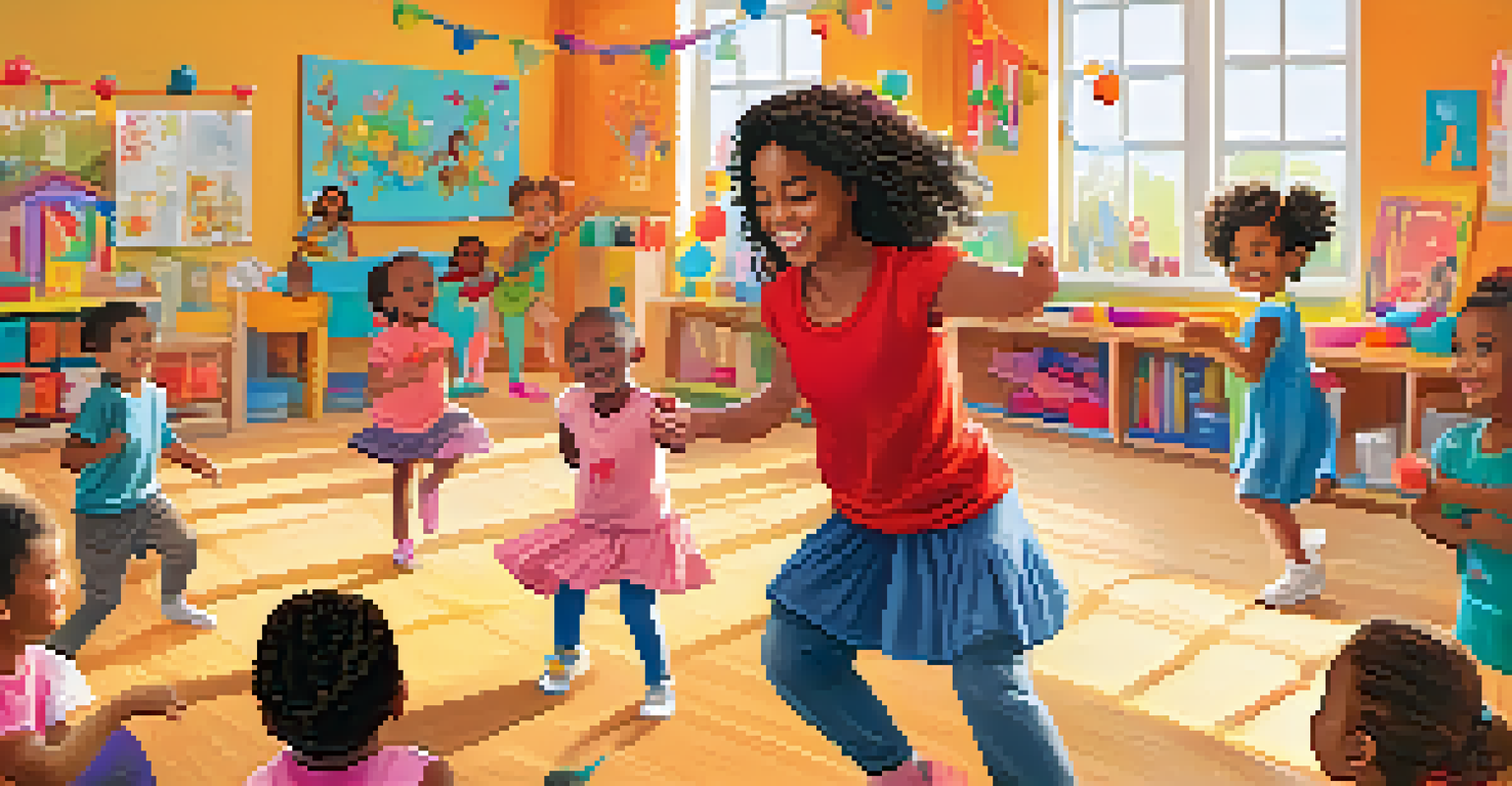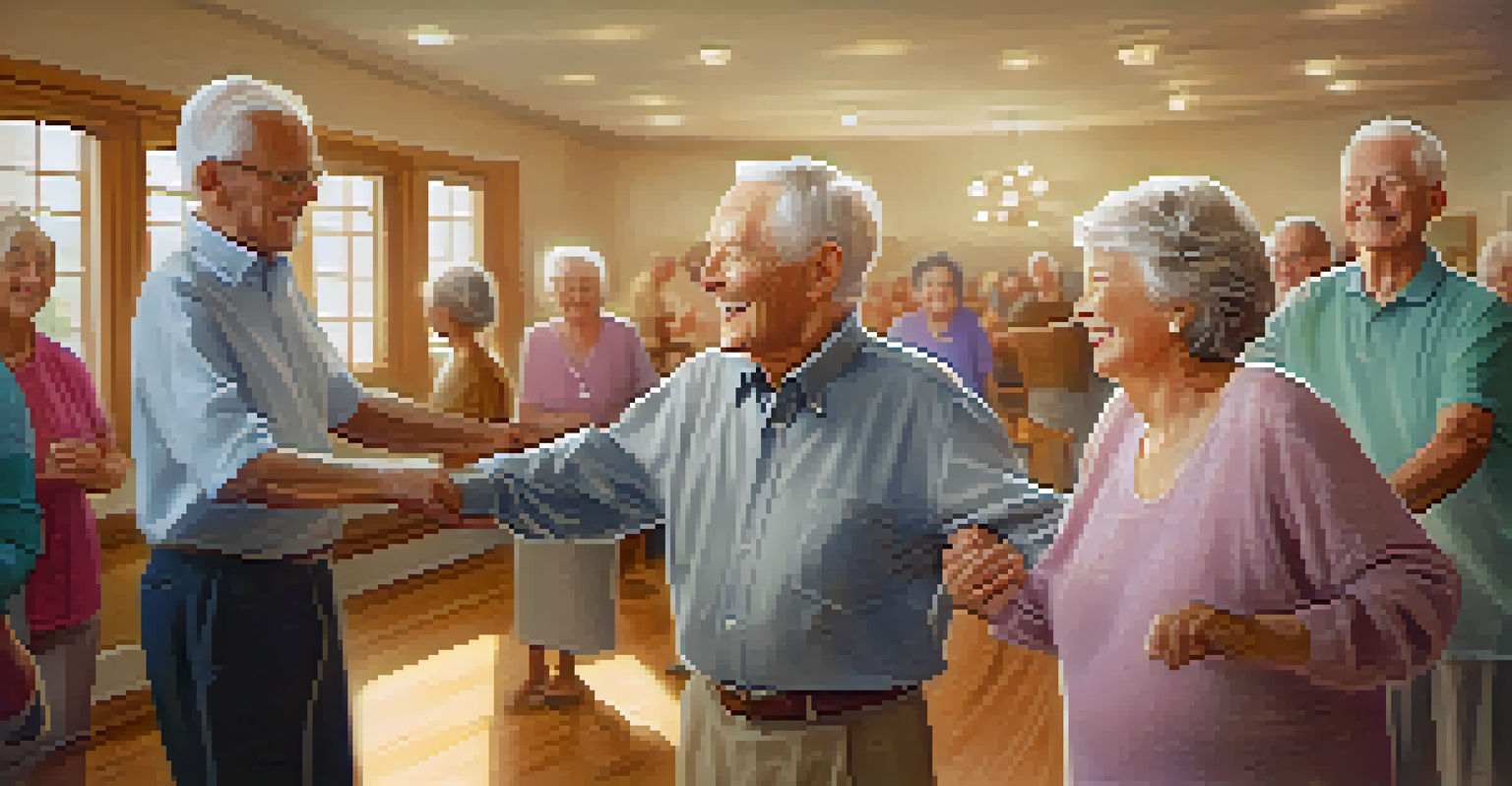Dance Therapy: Impact on Mental Health and Brain Function

What is Dance Therapy and Its Origins
Dance therapy, also known as dance movement therapy (DMT), combines movement and emotional expression to promote healing. It emerged in the 1940s, rooted in the belief that movement can reflect emotional experiences. This therapeutic approach uses dance as a medium for individuals to express feelings that might be difficult to articulate verbally.
Dance is the hidden language of the soul.
Through structured sessions led by trained therapists, participants explore their emotions and body movements in a safe environment. This process not only fosters self-awareness but also enhances emotional well-being. By integrating the mind and body, dance therapy offers a unique pathway to understanding oneself.
As a holistic therapy, dance therapy can benefit various populations, including those with mental health issues, trauma, or disabilities. It serves as a bridge between physical movement and emotional expression, paving the way for healing and personal growth.
How Dance Therapy Influences Mental Health
One of the most significant impacts of dance therapy is its ability to reduce symptoms of anxiety and depression. Engaging in rhythmic movement releases endorphins, which are neurotransmitters that promote feelings of happiness and well-being. This natural high can lead to improved mood and decreased stress levels.

Moreover, dance therapy encourages mindfulness, a practice that helps individuals stay present and focused. By concentrating on their movements, participants can quiet their racing thoughts, providing a mental break from daily stressors. This shift in focus can create a sense of calm and clarity.
Dance Therapy Enhances Well-being
Dance therapy promotes emotional expression and healing through movement, benefiting various populations.
Additionally, the social aspect of dance therapy fosters connections with others, which is crucial for mental health. Sharing the dance floor with peers creates a supportive community, reducing feelings of isolation and loneliness. This collective experience can enhance self-esteem and promote emotional resilience.
The Science Behind Dance and Brain Function
Research indicates that dance has a profound effect on brain function, particularly in areas related to memory and cognitive skills. When we dance, our brains engage in complex processes to synchronize movement with rhythm, which enhances neural connectivity. This means that dance can help improve our brain's overall efficiency.
Movement is a medicine for creating change in a person's physical, emotional, and mental states.
Moreover, dance therapy stimulates the release of brain-derived neurotrophic factor (BDNF), a protein that supports the survival and growth of neurons. Higher levels of BDNF are associated with improved learning and memory, making dance not just a physical activity but a cognitive workout as well. This dual benefit underscores the importance of incorporating movement into our daily lives.
The neuroplasticity facilitated by dance can lead to lasting changes in how the brain functions. As participants engage in repetitive movements and learn new dance steps, they create new neural pathways, bolstering cognitive flexibility. This adaptability can be particularly beneficial for older adults, helping to stave off cognitive decline.
Dance Therapy Techniques: What to Expect
Dance therapy sessions often incorporate various techniques, including improvisation, structured choreography, and guided movement exercises. These approaches encourage participants to explore their bodies and emotions in a safe space. The flexibility of these methods allows therapists to tailor sessions to individual needs.
A common technique is 'mirroring,' where participants mimic the movements of a therapist. This not only builds trust but also enhances body awareness and connection to emotions. The act of mirroring can also lead to greater empathy and understanding among group members.
Dance Boosts Mental and Cognitive Health
Engaging in dance therapy stimulates brain function, enhancing memory and cognitive flexibility.
Throughout the sessions, participants are encouraged to verbalize their experiences and feelings, creating a dialogue that complements the physical movement. This combination of dance and conversation fosters a deeper understanding of oneself and can reveal hidden emotions that need addressing.
Benefits of Dance Therapy for Children
Dance therapy is particularly effective for children, helping them express emotions and develop social skills. Kids often find it easier to communicate through movement rather than words, making dance therapy a valuable tool for emotional expression. This is especially beneficial for children with autism or those who struggle with traditional forms of communication.
Moreover, dance therapy can enhance motor skills and coordination in young children. As they engage in various movements, they not only improve their physical abilities but also gain confidence in their bodies. This newfound confidence often translates into other areas of their lives, from academics to interpersonal relationships.
Additionally, participating in group dance therapy fosters teamwork and cooperation among children. They learn to work together, share space, and respect each other's movements, which can lead to improved social interactions. Through these shared experiences, children build friendships and develop a sense of belonging.
Dance Therapy for Seniors: Promoting Well-being
As we age, maintaining mental and emotional health becomes increasingly important, and dance therapy can play a vital role in this. For seniors, engaging in dance offers both physical activity and social interaction, which are key components of overall well-being. Movement can help combat the effects of aging, such as cognitive decline and depression.
Dance therapy sessions for seniors often focus on gentle movements that are safe and accessible. This not only helps improve physical health but also stimulates cognitive functions. The joy of dancing together can evoke memories and a sense of nostalgia, further enhancing emotional well-being.
Effective for All Age Groups
Dance therapy is valuable for children and seniors alike, improving social skills and promoting emotional health.
Moreover, dance therapy encourages seniors to express their feelings and share their stories through movement. This allows them to reminisce about their past while also connecting with their present emotions. The combination of physical activity and emotional expression can lead to a renewed sense of purpose and joy in life.
Finding a Dance Therapy Program Near You
If you're interested in exploring dance therapy, the first step is to research local programs or certified dance movement therapists. Many communities offer classes or workshops tailored to different needs and ages. Whether you’re seeking individual therapy or a group setting, there are options available.
When searching for a program, it’s important to look for certified therapists who have received proper training in dance therapy. They should be able to create a safe and supportive environment for participants to explore their emotions. Don't hesitate to reach out to them and ask about their approach and experience.

Additionally, consider joining online forums or local support groups where you can connect with others interested in dance therapy. Sharing experiences can provide motivation and insights, making the journey toward improved mental health through dance even more enriching.